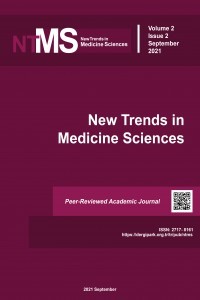Ethnomedicianal Profile of Flora of District Sialkot, Punjab, Pakistan.
Ethnomedicianal Profile of Flora of District Sialkot, Punjab, Pakistan.
analgesic, antipyretic, renal, gastrointestinal,
___
- [1] Ncube, N. S., Afolayan, A. J., & Okoh, A. I. (2008). Assessment techniques of antimicrobial properties of natural compounds of plant origin: current methods and future trends. African journal of biotechnology, 7(12).
- [2]. Borris, R. P. (1996). Natural products research: perspectives from a major pharmaceutical company. Journal of ethnopharmacology, 51(1-3), 29-38.
- [3] Rates, S. M. K. (2001). Plants as source of drugs. Toxicon, 39(5), 603-613.
- [4] Kone, W. M., Atindehou, K. K., Terreaux, C., Hostettmann, K., Traore, D., & Dosso, M. (2004). Traditional medicine in North Côte-d’Ivoire: screening of 50 medicinal plants for antibacterial activity. Journal of ethnopharmacology, 93(1), 43-49.
- [5] Harvey, A. L. (2008). Natural products in drug discovery. Drug discovery today, 13(19-20), 894-901.
- [6] Akhtar, M. S., Iqbal, Z., Khan, M. N., & Lateef, M. (2000). Anthelmintic activity of medicinal plants with particular reference to their use in animals in the Indo–Pakistan subcontinent. Small Ruminant Research, 38(2), 99-107.
- [7] Tariq, A., Adnan, M., Iqbal, A., Sadia, S., Fan, Y., Nazar, A., ...& Mazari, P. (2018). Ethnopharmacology and toxicology of Pakistani medicinal plants used to treat gynecological complaints and sexually transmitted infections. South African Journal of Botany, 114, 132-149. [8] Bashir A, Ali N, Bashir S, Choudhary MI: Biological activities of aerial parts of Tylophora hirsuta Wall. Afr J Biotechnol 2009,8(18):4627-4631. [9] Olayiowola A: WHO’s traditional medicine programme: progress and perspective. WHO Chron 1984,38(2):76-81.
- [10] Razzak, J. A., Hyder, A. A., Akhtar, T., Khan, M., & Khan, U. R. (2008). Assessing emergency medical care in low income countries: a pilot study from Pakistan. BMC emergency medicine, 8(1), 8.
- [11] Shinwari ZK, Salima M, Faisal R, Huda S, Asrar M: Biological screening of Indigenous knowledge based plants used in Diarrheal treatment. Pak J Bot 2013,45(4):1375-1382. [12] Gilani, S. N., & Ikram, M. (1985). Antipyretic studies on some indigenous Pakistani medicinal plants. Journal of ethnopharmacology, 14(1), 45-51.
- [13] Cotton, M.D., (ed.,) 1996. In Ethanobotany: Principles and Application. John Wiley and Sons; Chichester, UK.
- [14] Shinwari, Z. K. (2010). Medicinal plants research in Pakistan. Journal of medicinal plants research, 4(3), 161-176.
- [15] Saqib, S. E., Kuwornu, J. K., Panezia, S., & Ali, U. (2018). Factors determining subsistence farmers' access to agricultural credit in flood-prone areas of Pakistan. Kasetsart Journal of Social Sciences, 39(2), 262-268.
- [16] Arshad, M., Nisar, M. F., Majeed, A., Ismail, S., & Ahmad, M. (2011). Ethnomedicinal flora in district sialkot, Punjab, Pakistan. Middle East J Sci Res, 9(2), 209-214.
- [17] Faisal, N., & Sadiq, N. (2009). Climatic zonation of Pakistan through precipitation-effectiveness index. Pakistan journal of Meteorology, 6(11).
- [18, 19] Zareen, A., Khan, Z., & Ajaib, M. (2013). Ethnobotanical evaluation of the shrubs of Central Punjab, Pakistan. Biologia (Pakistan), 59(1), 139-147.
- [20] Saroya AS: Herbalism, Phytochemistry and Ethnopharmacology. Science Publishers, Enfield, New Hampshire New York; 2011.
- ISSN: 2717-8161
- Başlangıç: 2020
- Yayıncı: Fazile Nur Ekinci Akdemir
Evaluation of 0-2 Month Old Infants Brought to the Pediatric Outpatient Clinic for Restlessness
The Role of Chlorogenic Acid in Alleviating Intestinal Ischemia/Reperfusion-Induced Lung Injury
Ayhan TANYELİ, Derya GÜZEL, Fazile Nur EKİNCİ AKDEMİR, Ersen ERASLAN, Mustafa Can GÜLER
Ethnomedicianal Profile of Flora of District Sialkot, Punjab, Pakistan.
Fozia NOREEN, Mishal CHOUDRİ, Shazia NOUREEN, Muhammad ADİL, Madeeha YAQOOB, Asma GHULAM MUSTAFA, Fızza CHEEMA, Faiza SAJJAD, Usman MUSHTAQ
Effect of Curcumin on Testis in Mice with Ehrlich Ascites Tumor
Seher YİLMAZ, Yeşim GÖÇMEN, Adem TOKPINAR, Şükrü ATEŞ, Mustafa NİSARİ, Aysen CANİKLİOĞLU, Ünal ÖZTEKİN
Ahmet YARDIM, Ramazan PAŞAHAN, Mustafa Namık ÖZTANIR, Osman ÇİFTÇİ, Aslı ÇETİN, Mehmet Arif ALADAĞ, Mehmet Akif DURAK
Acute Myelitis Secondary to COVID-19 in an Adolescent: Causality or Coincidence ?
Muhammet Akif GÜLER, Filiz KESKİN, Hüseyin TAN
The Effect of Apilarnil on The Autophagia Against Lipolysaccarite-Based Sepsıs in Liver
Züleyha DOĞANYİĞİT, Betül KÖKLÜ, Arda UNER, Aslı OKAN, Emin KAYMAK, Sibel SİLİCİ
